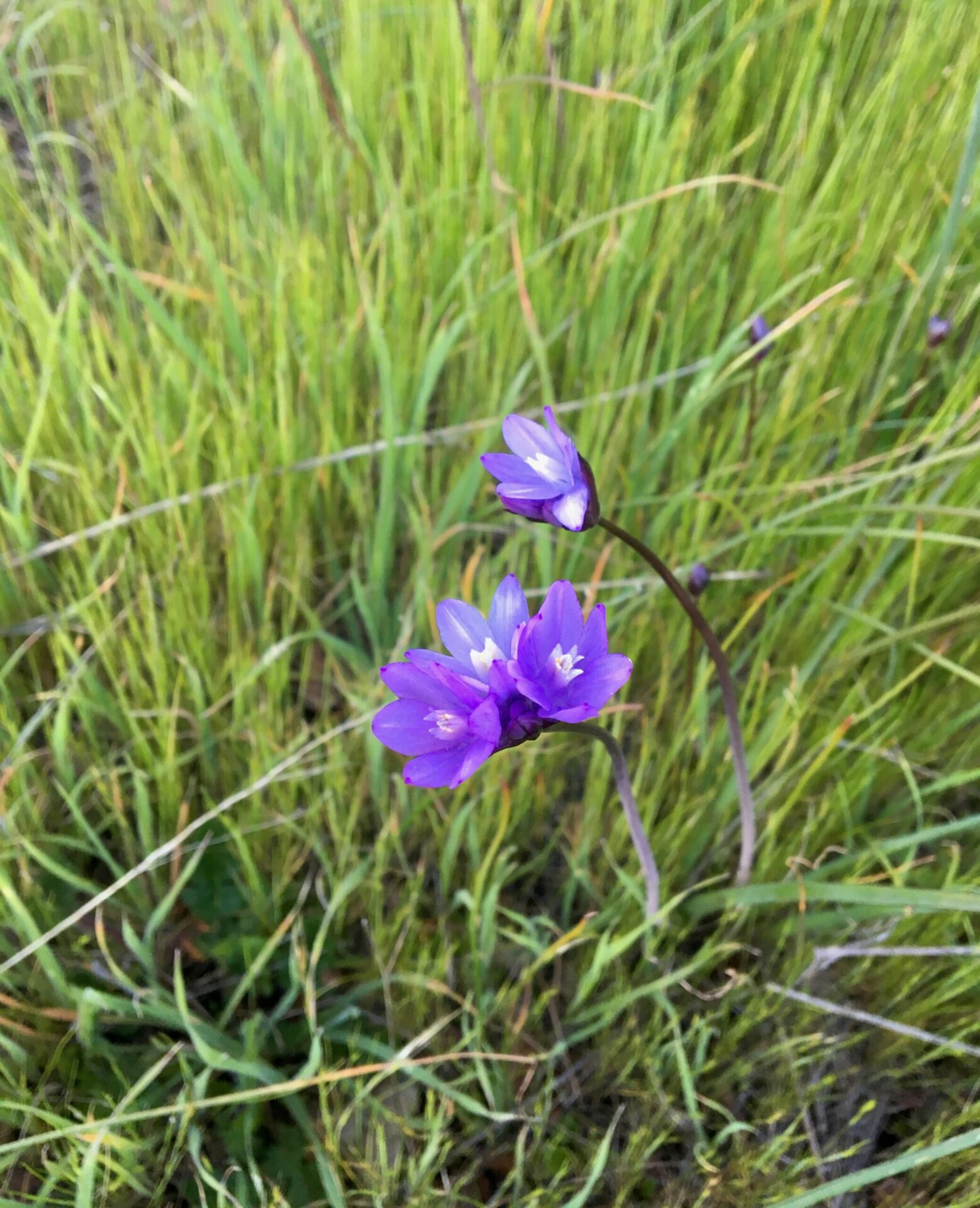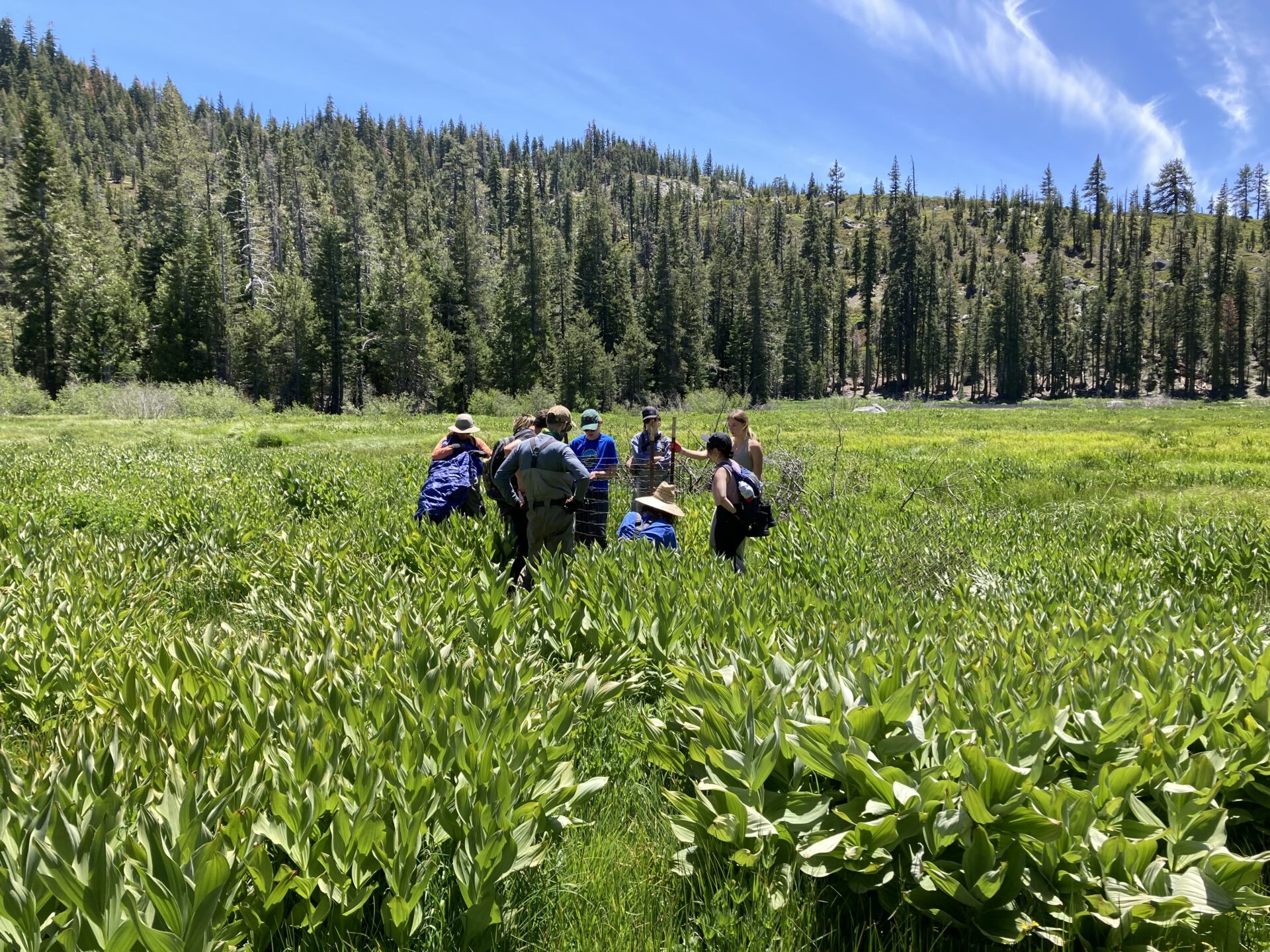Wild for Wildflowers: Exploring the Spring Wonders of the Sierra Foothills
Appreciating and Protecting the Beauty of our Native Plants
Now that spring is in full bloom we’ve been witnessing wildflowers popping up alongside trails and in meadows. They are also starting to blanket hillsides in beautiful shades of orange, yellow, and purple. We want to take this opportunity to share why preserving them is so important and introduce some of our favorite common wildflowers that are sometimes overlooked.
Picture Taking Etiquette
Fields of wildflowers make for stunning photos and are sometimes vast enough to fill the entire frame. If we want to witness these views again next spring, we have to be careful not to harm the flowers we love and encourage others to do the same. This means resisting the temptation to sit in the fields for a selfie or pick a bouquet to take home.
Protecting wildflowers isn’t just for us humans though. Wildflowers support entire ecosystems that include birds, butterflies, insects, and animals that depend on their seeds for survival. In fact, picking or destroying wildflowers is illegal on public lands in California as well as on state and county rights of way (see California Penal Code Section 384a).
You can take beautiful photos of wildflowers to share on social media and encourage others to do the same by using #nowildflowerswereharmed when you stay on trail when taking photos and leave the flowers as you found them. This helps to raise awareness about the importance of these spring blooms for us and the ecosystem.
Here are some of our wildflower favorites:
Lupine – everyone’s favorite purple plant.
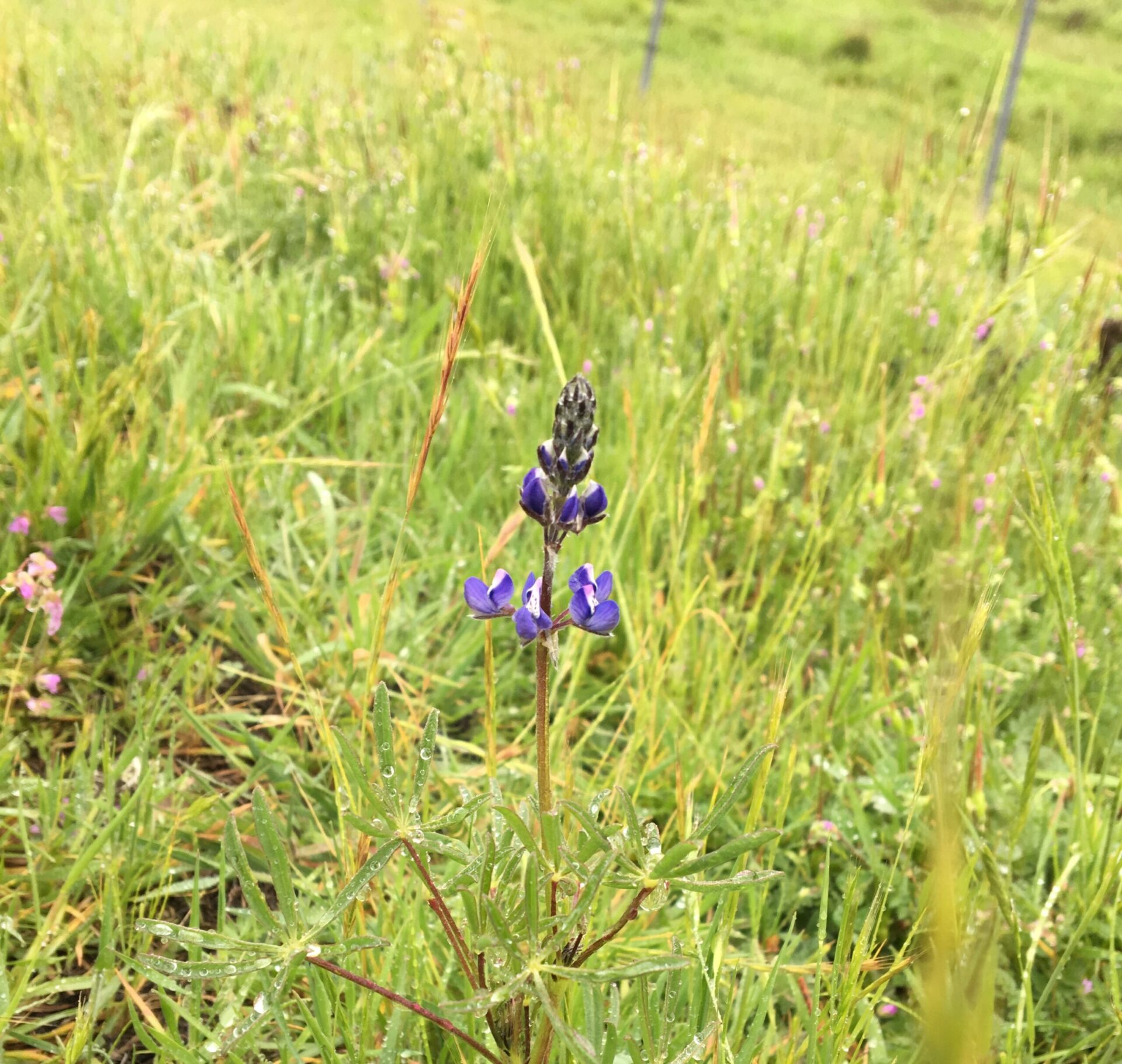
There are several different species of lupine that can be found in Nevada County. Some common species include the larger Lupinus albifrons (silver bush lupine) and the smaller Lupinus bicolor (miniature lupine) pictured here.
Other than the distinct blue-purple petals, lupine can be identified by its palmate leaf structure. This means that the leaves fan out from a single point, like fingers on the palm of your hand! Many species of this native, perennial herb attract native bees and host the butterfly Arrowhead Blue.
Like some other members of the Fabaceae family, or pea family, lupine fixes nitrogen and restores degraded soils. Once this flower blooms, its striking colors are hard to miss.
Look for it in your backyard, on roadsides, and along trails.
Vetch – lupine’s cousin and runner up for everybody’s favorite purple plant.
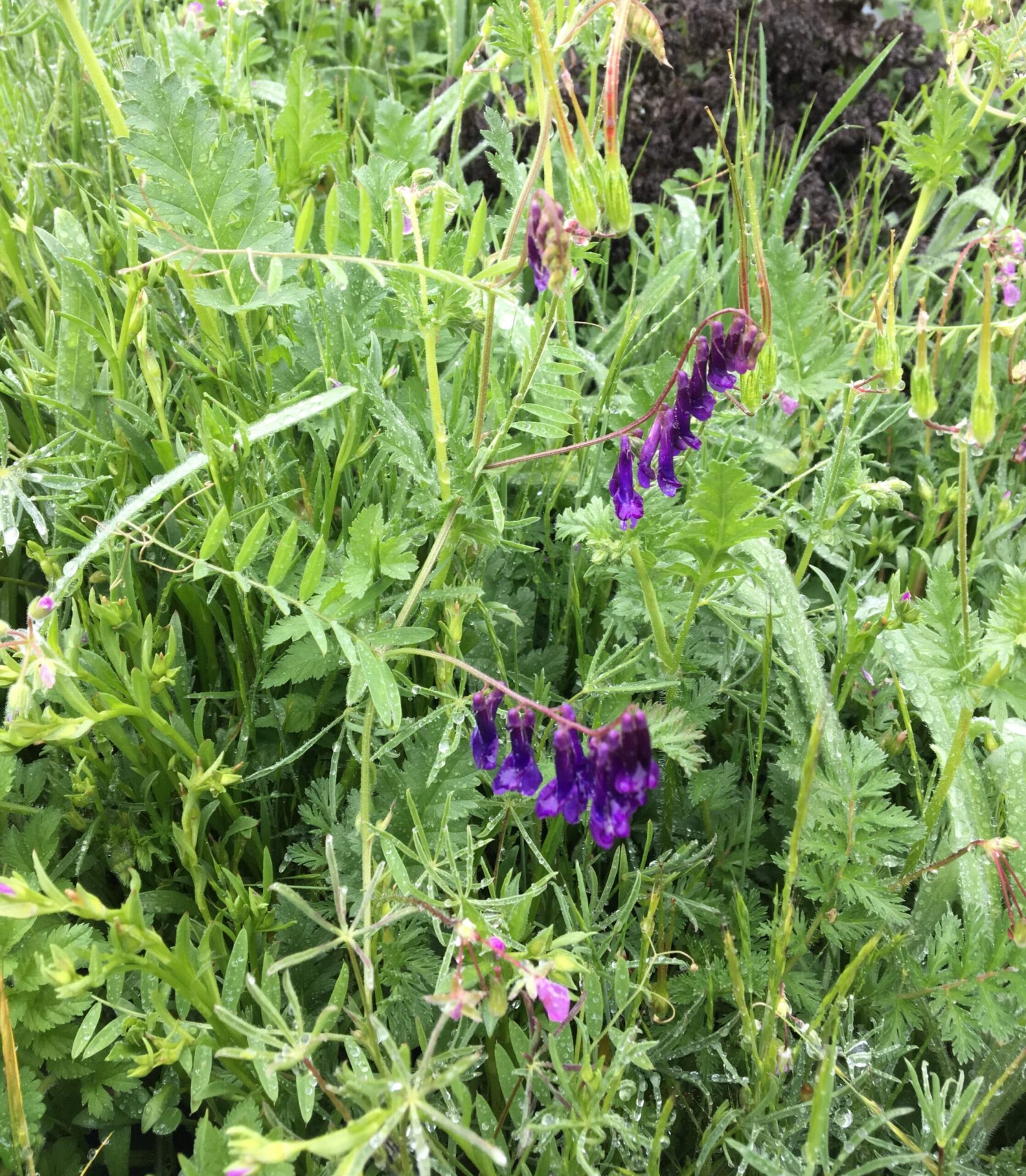
Another member of the Fabaceae family, vetch also adds nitrogen to soil via fixation. In the foothills, the more common vetch species found are non-natives Vicia villosa (hairy vetch) and Vicia sativa (spring vetch). Although there is a native species of vetch, Vicia americana (American vetch) that has been observed in the Nevada City area, it is much less common.
Many of the Vicia species host a number of butterflies and are pollinated by honey and bumble bees. However, only the native Vicia americana is visited by native bees.
This genus of plant has nurtured humans as well. There is evidence of vetch seeds being part of people’s diet as far back as the Neolithic age – nearly 6,500 years ago!
Besides the tubular shaped flowers and purple-pink petal colors, vetch can be identified by its alternate-compound leaf structure and vine-like growth patterns.
Keep an eye out for this vine along sidewalks or growing in the sunniest parts of your garden.
Dichelostemma capitatum – yet another purple beauty!

Also known as blue dicks or wild hyacinth, this is common perennial herb can be found throughout California.
This native flower grows a corm, or underground tuber-like body, that helps store necessary nutrients for the plant to survive the winter. These corms are a nutrient-rich food source to many wildlife and have a history of being eaten and managed by native tribes.
Since Dichelostemma capitatum populations thrive under a disturbance regime, or a cycle of environmental change, traditional indigenous management of this plant includes periodically visiting plantings to harvest the corms for food, which in practice tills the soil and boosts populations.
As you can tell, this stunning wildflower offers so much more than a pretty view.
Filaree or heron’s bill – interchangeable names for this wildly common non-native forb.
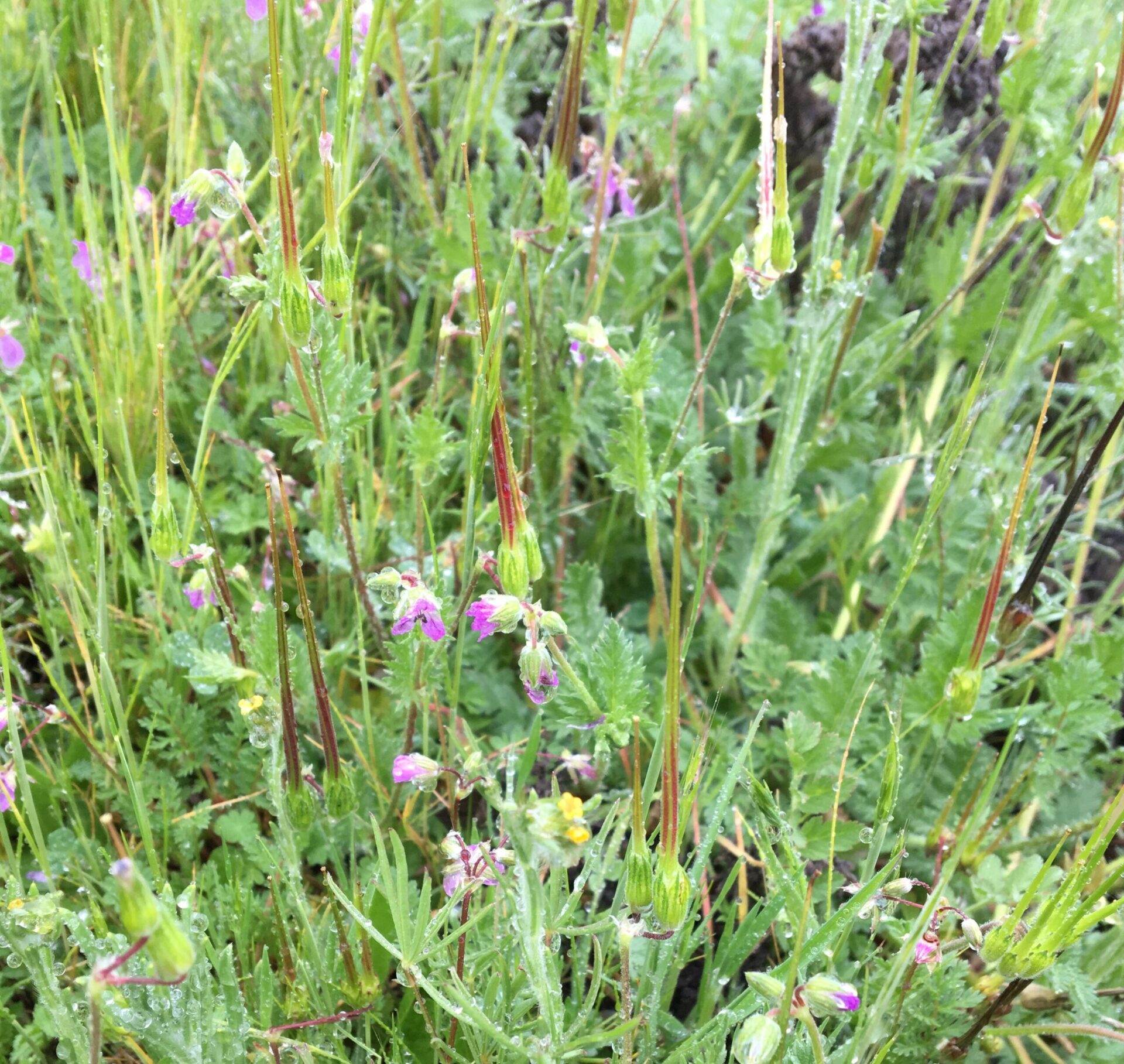
There are a couple of species of Erodium present in the foothills of Nevada County, more common are Erodium botrys (pictured) and Erodium cicutarium. The common name heron’s bill refers to the distinctive long, pointed fruit body seen in the picture.
It grows well in disturbed sites (think sidewalks) and also grows in lawns if you don’t use herbicides. Therefore, you probably won’t have to go far to find filaree. Keep an eye out for its small, pink to purple flowers.
Although there are no native species of filaree in Nevada County, many species are considered to be “naturalized” in the wild. In other words, this plant has been around long enough in the landscape, that its presence is well established and expected.
Miner’s lettuce – just what it sounds like!
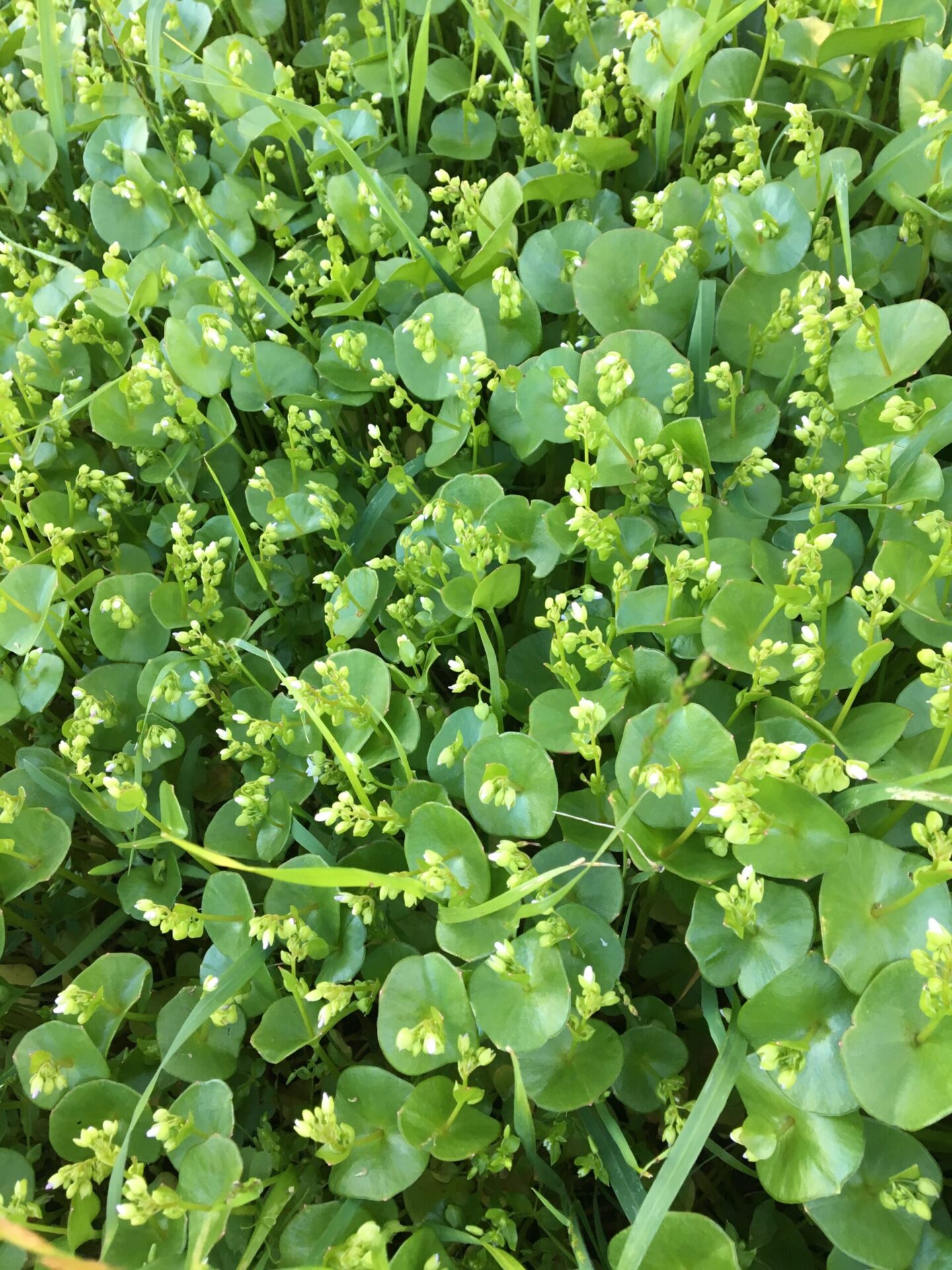
That is right, during the California Gold Rush, miners ate this plant raw, often to prevent scurvy. However, we recommend sticking to lettuce or spinach if you crave something green.
This native, perennial herb, also known as Claytonia perfoliata, is found throughout California in many different habitats, including foothill woodlands, chaparral, and mixed evergreen forests.
Although miner’s lettuce does not have brightly colored flowers, it is easy to spot the bowl-shaped leaf under its small white and pale-pink flowers.
I am certain you’ve seen this plant around town, hiking trails, and your neighborhood. Now you have a name to put to the plant.
Fiddleneck – aptly names for its spiraling flower growth pattern.

There are a couple of different species of fiddleneck, or Amsinckia, that occur in Nevada County. The one pictured is likely Amsinckia intermedia, common fiddleneck.
It can be difficult to distinguish between species, as the distinctions are minute. For example, it takes distinguishing between yellow and orange petals, or a few millimeters size difference on the corolla of the flower.
Nonetheless, as far as identifying goes, just look out for the yellow to orange colored flowers that grow in the shape of a fiddleneck, and you know you are looking at a species of Amsinckia.
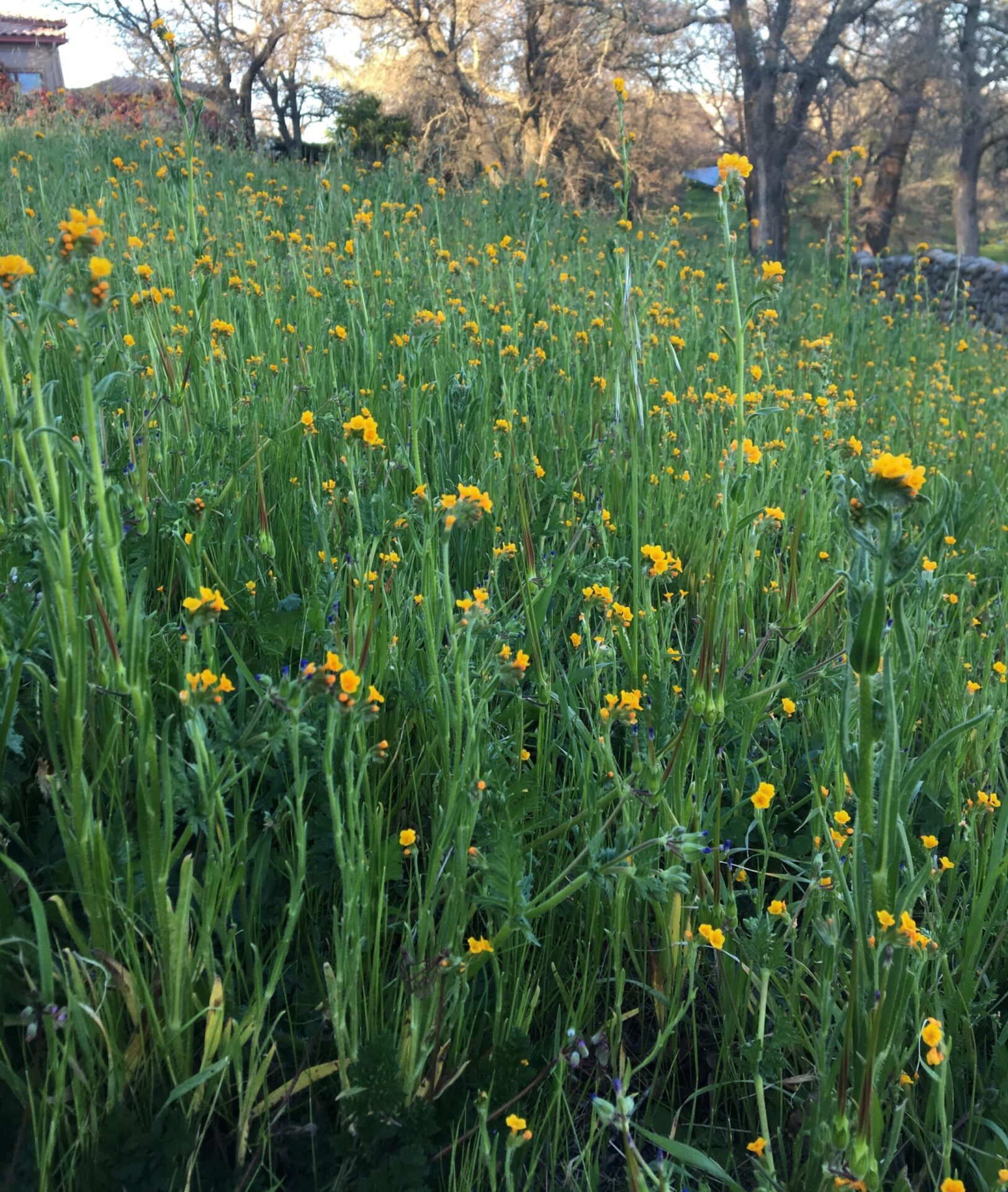
Who says you have to go on a special outing to find beautiful wildflowers? Many species occur right under our noses. Let us all take the time to get to know the common flowers that grow all around us.
Did you enjoy this post?
Get new SYRCL articles delivered to your inbox by subscribing to our ENews.

